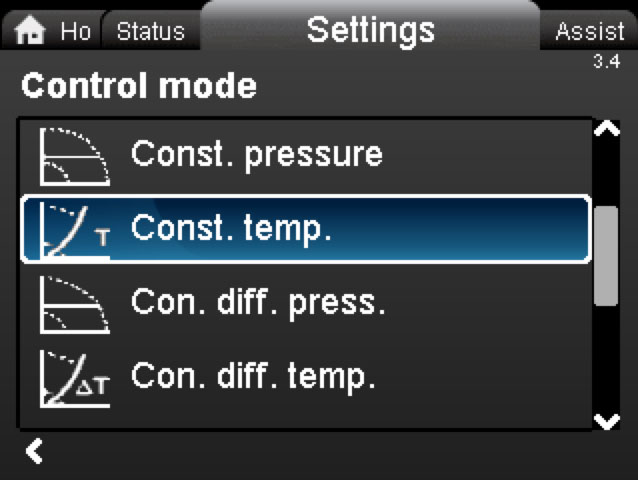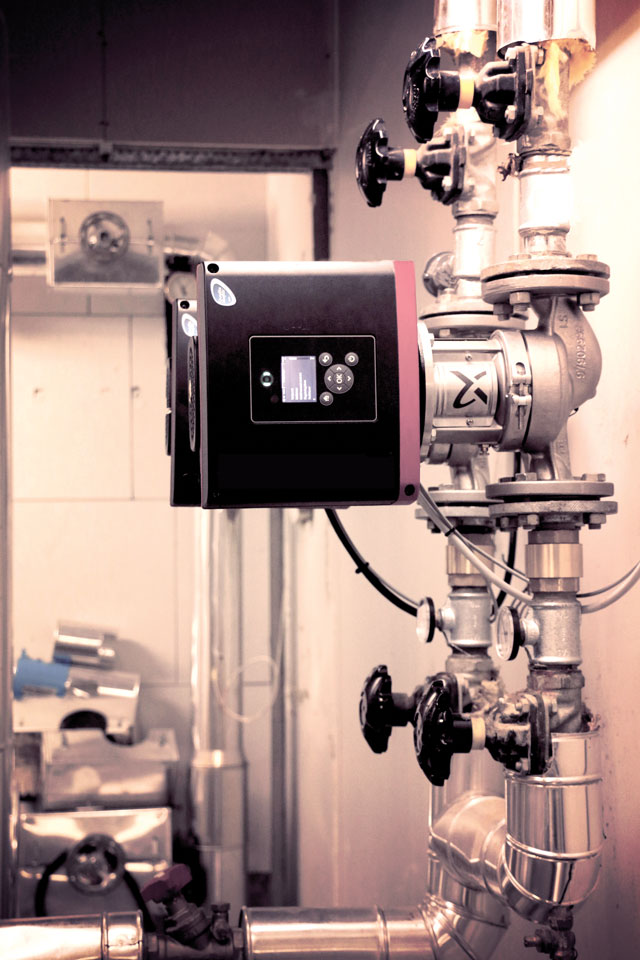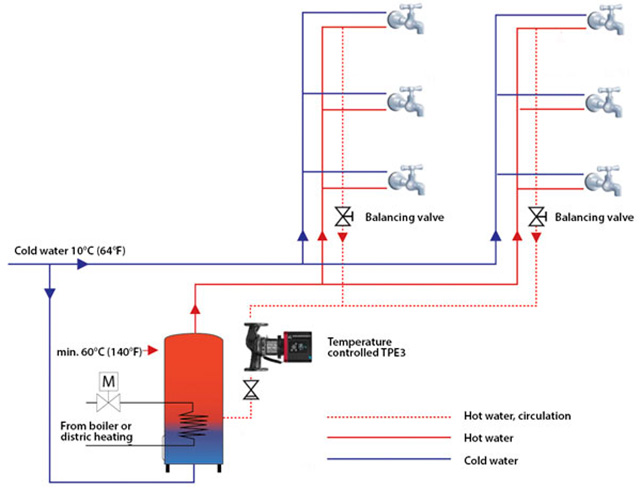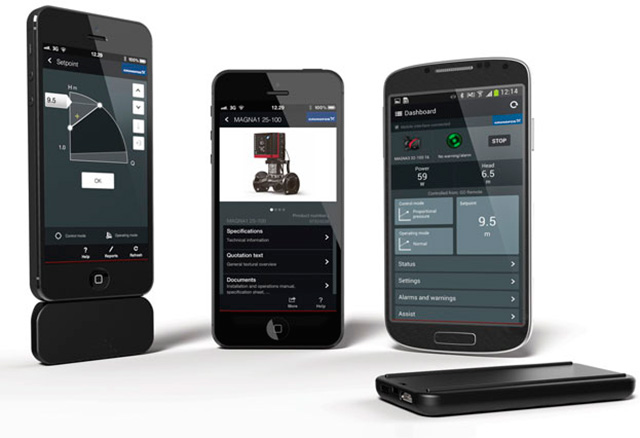In domestic hot water applications, users need instant hot water as soon as the tap is open. To provide that, separate circulation pipelines are required in the application. In traditionally made systems, a constant-speed pump is used to provide the needed pressure in the hot water and circulation pipeline. The pump typically runs at maximum speed and is usually throttled by a valve to the design flow. The right flow in the vertical riser pipes is commissioned by either static balancing valves or thermostatic valves.
 Figure 1. The pump display shows the control-mode settings page. All settings are managed on the pump display as well as the manufacturer’s handheld device or app.
Figure 1. The pump display shows the control-mode settings page. All settings are managed on the pump display as well as the manufacturer’s handheld device or app.An Intelligent Pump in DHW Applications
One new intelligent pump has introduced a constant temperature control mode. The constant temperature control mode maintains the temperature set on the pump by adapting the pump speed to the actual need. If the sensed temperature is increasing, the pump will ramp down and vice versa. The temperature signal is based on the pump's internal temperature sensor, or an external sensor can be connected directly to the pump.
Constant Temperature Control Mode
The constant temperature control mode ensures that the pressure and flow in the system are what is needed to maintain the desired water temperature. Because the desired water temperature is always ensured and overflow should not occur, pump throttling valves are unnecessary and the building owner can expect both substantial pumping energy savings and capital cost reductions. Its built-in communication, and energy-metering and flow-limiting functionalities make it a money-saver in heating, cooling and district energy application.
Handheld Control Device
The intelligent pump can be set up and accessed with the manufacturer's handheld device. With this device or app, control mode and setpoints can be selected or changed, for example.
 Image 1. The intelligent pump has integrated temperature sensors that make the pump able to adapt its performance according to the water temperature. (Images and graphics courtesy of Grundfos)
Image 1. The intelligent pump has integrated temperature sensors that make the pump able to adapt its performance according to the water temperature. (Images and graphics courtesy of Grundfos)Case Study
The new intelligent pumps were installed at a regional hospital in Denmark. In 2014, the hospital had a capacity of 500 beds, a floor area of 95,000 square meters, 2,900 employees and a water consumption of 58,000 cubic meters (m3).
The old pumps at the hospital were constant-speed pumps, always operating at 100 percent and unable to adapt their performance to varying need since they were not supplied with frequency inverters. They were also undersized and not up to the job in terms of pressure. This meant the flow in the system was insufficient to maintain the needed temperatures.
 Figure 2. This figure depicts a domestic hot water system with an intelligent pump on the main circulation pipeline. The water distribution in the water risers is maintained by balancing valves on each riser. Thermostatic valves cannot be used because the pump is running in constant temperature mode. The main water flow is maintained by the pump, so there is no need for a pump throttling valve.
Figure 2. This figure depicts a domestic hot water system with an intelligent pump on the main circulation pipeline. The water distribution in the water risers is maintained by balancing valves on each riser. Thermostatic valves cannot be used because the pump is running in constant temperature mode. The main water flow is maintained by the pump, so there is no need for a pump throttling valve. Image 2. Pump settings are managed with a proprietary handheld device or smartphone with the manufacturer's app.
Image 2. Pump settings are managed with a proprietary handheld device or smartphone with the manufacturer's app.Hot water plants annually supply the hospital building with 3,200 and 800 m3 of hot water, respectively. The cold water use is 17,000 m3 annually. The hot water circulation pumps are set up to operate in constant temperature mode at a temperature of 42 C at the sensor location. Two circulation pumps were fitted on the two hot water heating plants that serve the main building.
Waiting time for hot water at the hospital is now reduced to three to four seconds. The payback time of the new installed intelligent pumps is expected to be two years. The quick payback is a result of the pump being temperature-controlled and able to adapt its performance to the need.
The intelligent pumps feature an integrated wireless technology that enables them to connect directly to each other. At the hospital, the two pumps are set up to run in alternating mode to ensure even operation hours. This wireless technology is integrated in the pumps, which means that no other pump controller unit is needed. Up to four pumps, sitting in parallel, can be operated in this manner.


